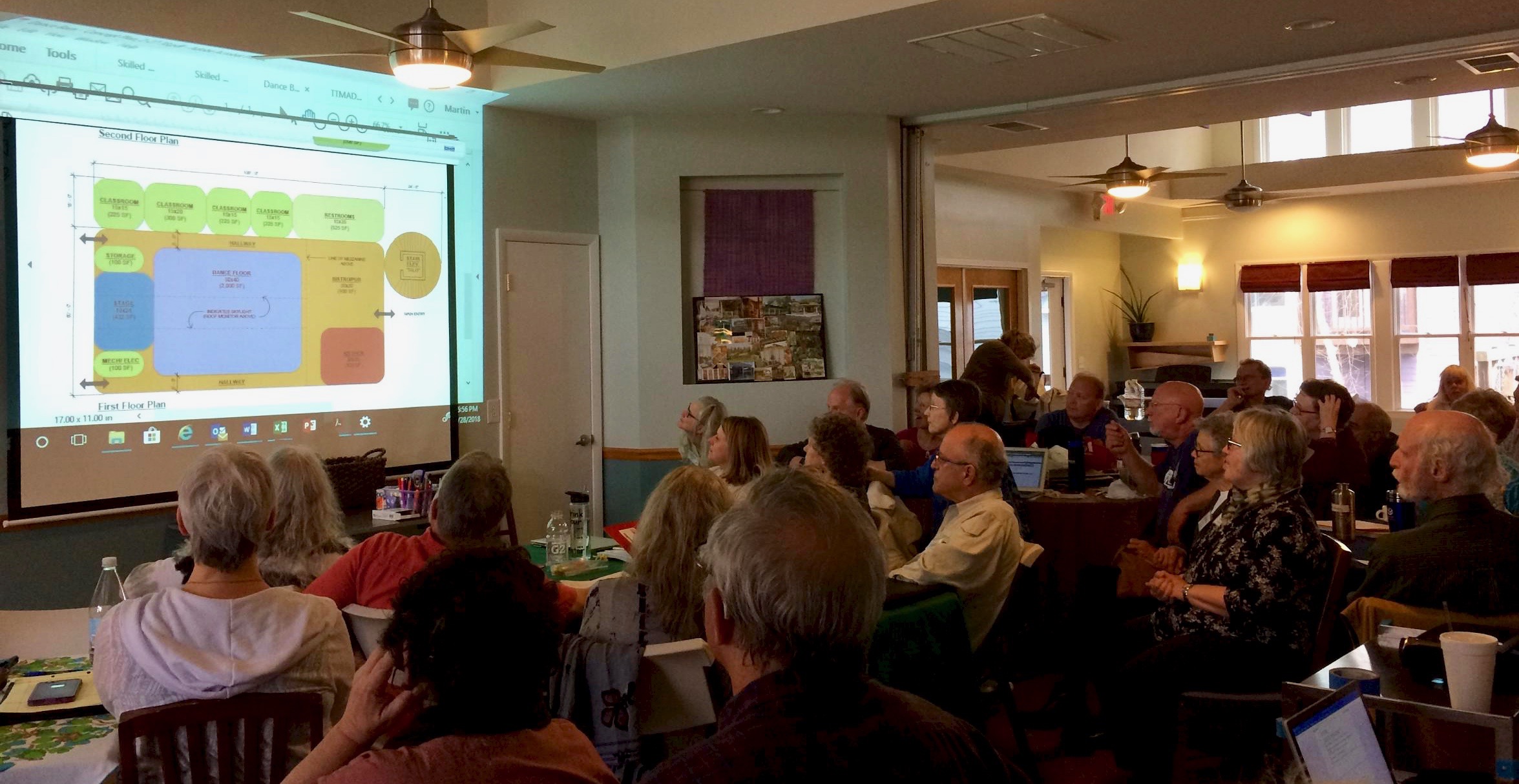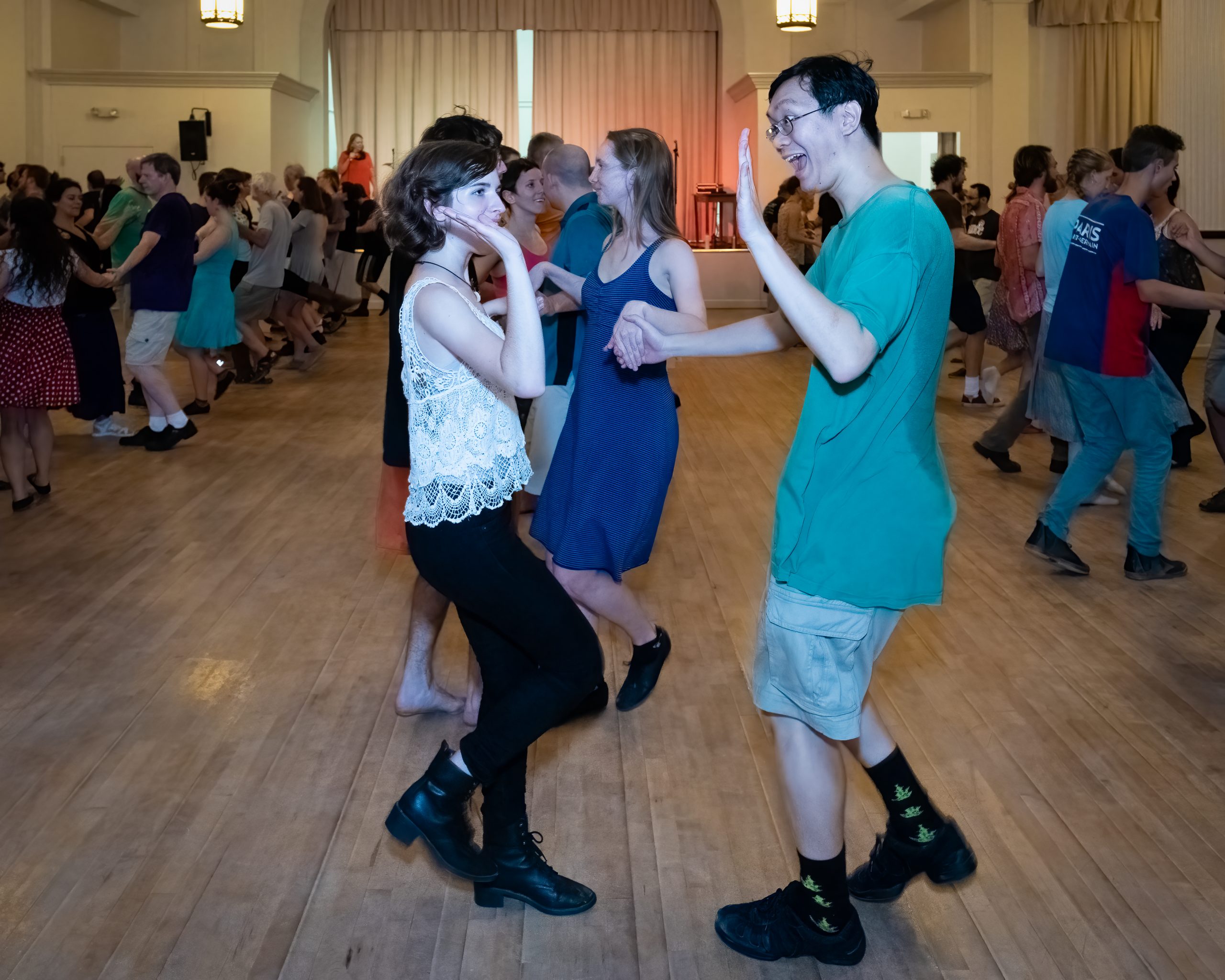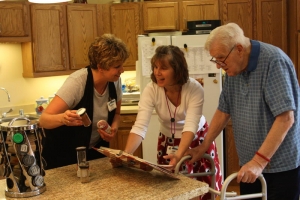
The Triangle Traditional Music and Dance Retirement Society (TTMADRS) is developing an intentional community that will be located in the Triangle area of North Carolina. The community will develop elements of co-housing and life-plan/CCRC communities to create an inclusive, socially permeable, and playful arts village that includes continuing care for older adults.
We plan to include a continuum of housing and healthcare using some of the Household Model principles developed by Action Pact. This model commits to meeting residents’ needs through the end of life, offering a combination of privacy, community, and organized support. More on the Household Model below.
- We want to stay together and play together through old age.
- We want to continue to practice our arts, enjoy our pleasures, engage with the world, and be useful until we take our last breath.
- We want innovative healthcare that is resident-directed, not institutional, and incorporates emerging, technology-based homecare.
Our vision includes the following:
Spaces
- Individual homes, townhomes, & apartments in an accessible, natural setting
- Community center for participatory arts, such as music and dance, that is welcoming to the surrounding community
- Dance hall/auditorium
- Practice, teaching, and studio spaces for arts, crafts, and music
- Pub, café, and/or other dining venues
- Wellness center with an outpatient clinic
- Adult Care Home for those who need more hands-on support and care
- Library & Media Center
- Accessible gardens and green spaces
- Other possible amenities over time:
- Swimming pool
- Visitor housing/camping
Conceptual Features
- Household-model advanced health care with medical technology at home
Medically Home Description (video) - Supportive, well-trained staff who are paid a living wage, with accountability and responsiveness to the wishes of the residents
- Programming and enriched environments for people with cognitive decline
- A professional team overseeing operations for the community, including social workers to help with transitions and crises
We also hope to add additional living spaces for short-stay visitors to enhance the permeability and welcoming nature of the community.

The Household Model
Components of the Household Model
The Household Model, developed by Action Pact, is a relatively new approach that we will adapt to use in our community. In the Household Model, long-term care homes adopt a person-centered approach that shapes the physical environment, the organizational structure, and interpersonal relationships in ways that create an atmosphere of genuine home, compassionate care, and connection with loved ones, while providing elders with clear opportunities to direct their own lives.
Residential living for a small number of people who need more personal care.
- Small households/cottages of 6
- Private bedrooms
- Full kitchen, living room, & dining room
- Normative daily living with flexible schedules
Each household has decision-making autonomy and is consistently staffed. The small, dedicated staff is cross-trained and self-led. Residents get up when they want to get up. They bathe, eat, sleep and rise when they wish, and generally decide how they will spend their day. Household life is more flexible, spontaneous, and fueled by curiosity and a variety of possible experiences. Quality of care and quality of life are of the highest priority, being embedded in a larger community of friends and loved ones.
Household Model Info at https://www.actionpact.com/about/household-model
